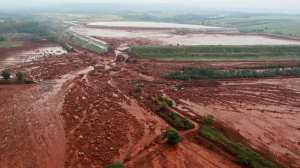October 2010 witnessed the largest red mud spill in the history of western Hungary, where a massive volume of red mud breached the depository wall. It led to injuring 200 people and killing 10. The spill contaminated the air, water, and soil in the nearby regions. Some reports also suggested that marine life in the 71 km stretch of the Torna-Marcal system was eliminated besides the terrestrial biota. Six years later, in August 2016, two villages in China’s Henan district faced a similar tragedy after a waste pond collapsed, releasing 2 million m3 of the by-product.
Mishaps like these are a constant reminder that experts must find alternative uses for toxic red mud rather than storing or gathering it in landfills. As the conversation around sustainability is getting louder, aluminium manufacturers are finding it difficult to effectively manage the by-products. Only proper red mud management can help evade such calamities in the future.
But what is red mud?
Red mud, also known as bauxite residue, is an industrial by-product generated after transforming bauxite to get alumina through Bayer’s process. It contains several oxide compounds, especially iron oxides, that give it a distinct red colour. This toxic solid waste also holds a large amount of caustic soda and is harmful to the environment. Finally, the brownish slurry can be a mixture of radioactive and rare earth elements alongside metal oxides.
The piling red mud: A challenge of Red Mud Management
Throughout the years, there have been 700 patented uses of red mud. Then why are companies still struggling to manage the brownish slurry? Currently, only 3% of it is recycled.
Red mud management is a challenging process, and due to its complexity, large volumes end up piling in mud ponds. However, the problem is that- the alkaline water can seep into the ground and contaminate groundwater. And, if the leached water overflows from disposal ponds owing to leaks or landslides on the banks or due to heavy tropical rains, catastrophic damage to water bodies, grasslands, and plants might occur.
One of the challenges of red mud management is the need for more technology, research, and precise data. In 2016, Iron manufacturers did not want to extract iron from red mud because its caustic characteristics ruined the smelters. Moreover, the commodities that can be made using red mud are already available for cheaper rates, and their production has been perfected throughout the decades.
Exploring the prospects of red mud in sustainability, circular economy, and more
Red mud management is not solely about safely disposing of the alumina plant by-product. Presently, it is about finding ways to sustainably use the product in various sectors while generating value for the economy and society.
A new tool for water and waste gas treatment
Through proper treatment, red mud has fantastic adsorbent qualities. It can effectively remove phosphates and heavy metals like lead, chromium, and arsenic from contaminated water. Furthermore, the alkaline properties of red mud can also treat waste gas containing toxins, such as nitrogen oxide, sulfur oxide, and hydrogen sulfur.
Reserve for rare earth elements and a contributor to a circular economy
Red mud is known to hold various rare earth elements, including scandium. The scandium-aluminium alloy is 40% stronger than pure aluminium, and it has grabbed the attention of manufacturers. Presently, scandium is valued at $3500 per kilogram. Further, if it is assumed that there are 4 billion tons of red mud global reserve, rare earth elements locked in it are estimated to be worth $4.3 trillion in economic value. Therefore, from a circular economic point of view, quantitative reclamation will offer a multi-billion-dollar opportunity in red mud recycling.
Recycled red mud’s use in infrastructural development
Red mud has a high iron content, and experts are leveraging this chemical composition to produce iron-rich cement. This new cement is as complex and compelling as the widely-used Portland cement. The alkaline by-product can also be used in road construction and extracting iron, which is useful for steel manufacturing.
Conclusion
Innovation, regulation, and an approach towards sustainability is the key to effective red mud management. Several scientists and experts are focusing on finding different uses of red mud. One group is using sulfuric acid and ionic liquid to extract rare elements and opines that red mud can meet 10% of Europe’s scandium demands. Aluminium is a widely used metal, omnipresent in daily use items to aircraft and modern electric vehicles. As the use of green metal increases, red mud management must become an important agenda for aluminium manufacturers. It is needless to say- toxic red mud is a resourceful waste material possessing various economic opportunities.
For a comprehensive exploration of sustainable approaches to red mud management, delve into AL Circle’s specialized industry report titled “Sustainability in the Global Aluminium Industry.” This report offers an in-depth analysis of sustainable practices and strategies within the aluminium industry, including detailed insights into effective red mud management methods.


